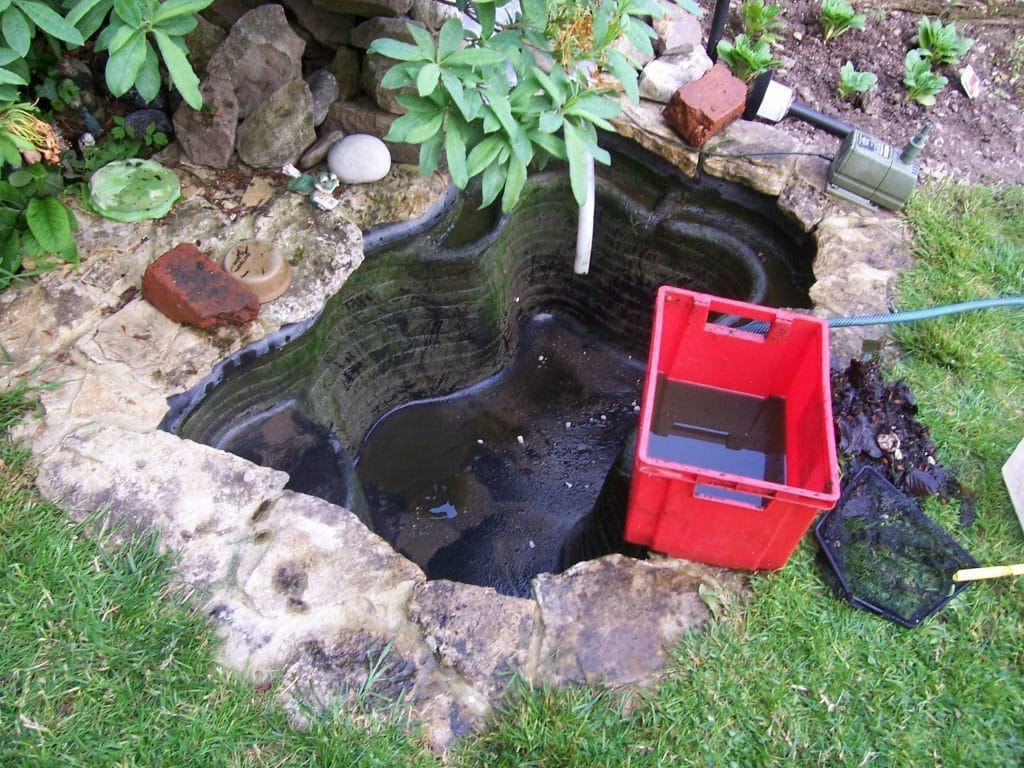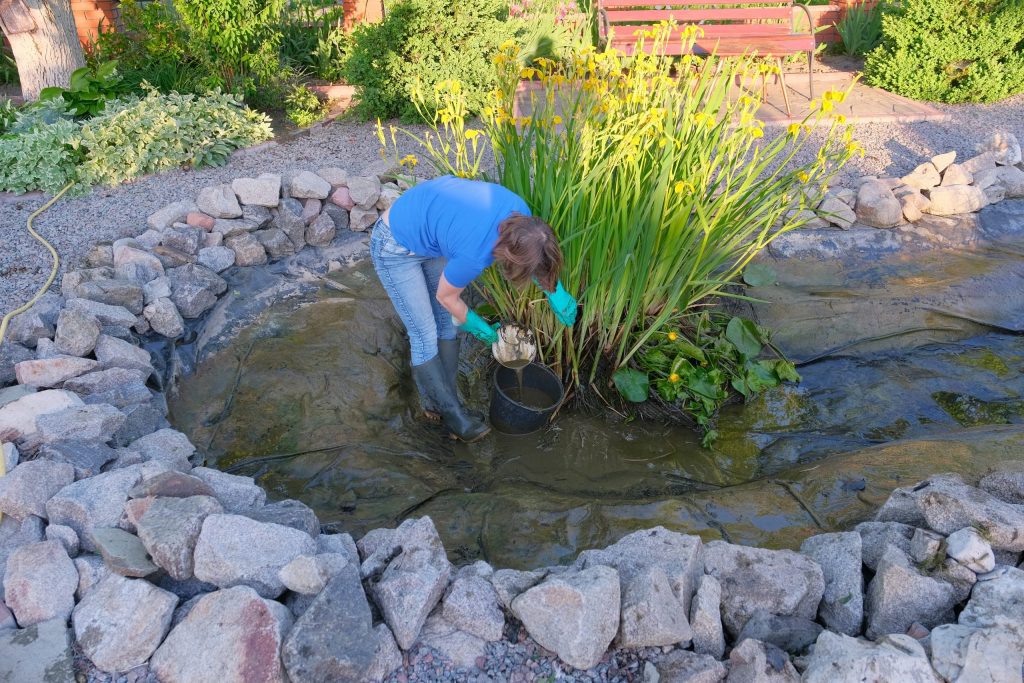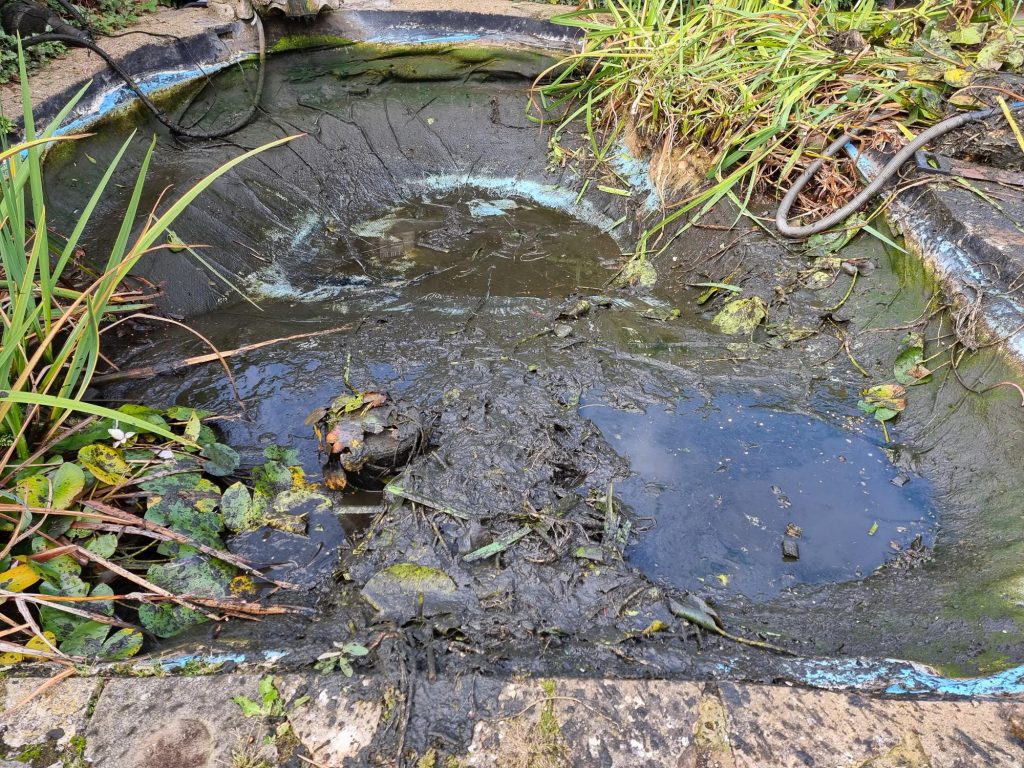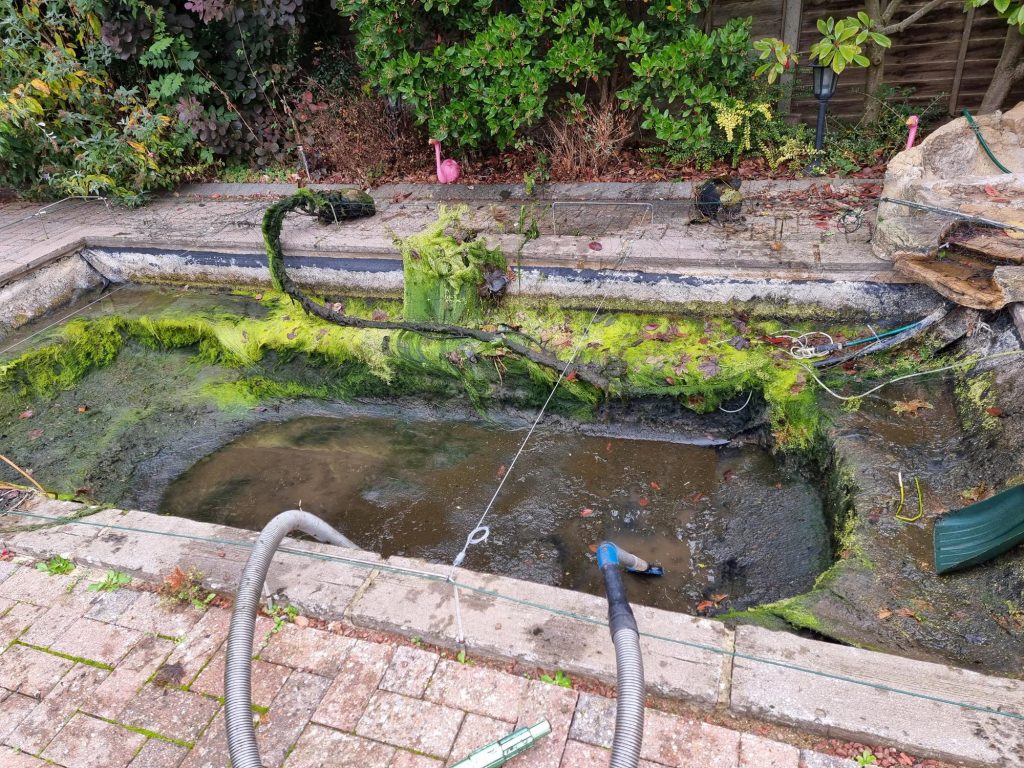Pond Cleaning Services
A full pond clean is essential for maintaining the health and beauty of our aquatic environments. This process generally includes assessing the pond’s condition, draining the water, cleaning the pond bed, and ensuring the equipment functions properly. It’s not just about removing debris; it’s about restoring the ecosystem to promote healthy fish and plants.
CONTACT US
What Does a Complete Pond Cleaning Involve?
A full pond clean is essential for maintaining the health and beauty of our aquatic environments. This process generally includes assessing the pond’s condition, draining the water, cleaning the pond bed, and ensuring the equipment functions properly. It’s not just about removing debris; it’s about restoring the ecosystem to promote healthy fish and plants.

Pond Cleaning Prices
Small Pond Clean Package – From £350 +vat
This package is designed for cleaning pre-existing small ponds, measuring up to 2.5m x 3.5m. It is suitable for static, fiberglass, concrete, or lined ponds that have been in place for some time.
Package Includes: – Safe removal of any fish into a separate Koi vat holding tank, using an air pump and net if necessary.
Draining the pond. – Pressure washing to thoroughly clean the pond.
Possible removal or tidying up/thinning of any aquatic plants.
Refilling the pond with the existing water held in the holding tank, as well as adding new water.
Reintroducing the fish and adding beneficial bacteria.
Checking all pre-existing filters, UVs, and pumps.
Please note that any repairs or replacements of existing equipment will be recommended and charged as additional costs.
Pricing Information: – Prices are plus VAT. – The quoted price applies within a 25-mile radius.
Booking Instructions: When booking, please send some pictures of your pond to help us determine the cost more accurately.
Medium Pond Clean Package – From £450 +vat
This package is designed for cleaning pre-existing small ponds measuring up to 4.8m x 3.3m. It is suitable for static, fiberglass, concrete, or lined ponds that have been in place for some time.
Package Includes: – Safe removal of any fish into a separate Koi vat holding tank, using an air pump and net if necessary.
Draining the pond. – Pressure washing to thoroughly clean the pond.
Possible removal or tidying up/thinning of any aquatic plants.
Refilling the pond with the existing water held in the holding tank, as well as adding new water.
Reintroducing the fish and adding beneficial bacteria.
Checking all pre-existing filters, UVs, and pumps.
Please note that any repairs or replacements of existing equipment will be recommended and charged as additional costs.
Pricing Information: – Prices are plus VAT. – The quoted price applies within a 25-mile radius.
Booking Instructions: When booking, please send some pictures of your pond to help us determine the cost more accurately.
Large Pond Clean Package – From £650 +vat
This package is designed for cleaning pre-existing small ponds measuring up to 4.8m x 3.3m. It is suitable for static, fiberglass, concrete, or lined ponds that have been in place for some time.
Package Includes: – Safe removal of any fish into a separate Koi vat holding tank, using an air pump and net if necessary.
Draining the pond. – Pressure washing to thoroughly clean the pond.
Possible removal or tidying up/thinning of any aquatic plants.
Refilling the pond with the existing water held in the holding tank, as well as adding new water.
Reintroducing the fish and adding beneficial bacteria.
Checking all pre-existing filters, UVs, and pumps.
Please note that any repairs or replacements of existing equipment will be recommended and charged as additional costs.
Pricing Information: – Prices are plus VAT. – The quoted price applies within a 25-mile radius.
Booking Instructions: When booking, please send some pictures of your pond to help us determine the cost more accurately.
A well-maintained pond not only enhances the beauty of your outdoor space but also provides a safe and thriving ecosystem for aquatic life. Our pond cleaning service is designed to ensure that your pond remains clean, clear, and balanced throughout the year.
Depending on the condition of your pond, we will perform a comprehensive cleaning process. This includes removing debris such as leaves, twigs, and other organic matter from the surface and bottom of the pond. We will also clean the filter system, skimmers, and pumps to ensure optimal functionality.

Vacuuming the Pond
After removing visible debris, we can use a pond vacuum to suck up any remaining sludge. A pond vacuum is specifically designed for this task and can reach nooks and crannies that are difficult to clean by hand.

Cleaning Filters and Pumps
Filters and pumps are vital for maintaining water quality. We recommend checking the filter every 2-4 weeks. During this check, remove debris and clean the filter media. A clogged filter can lead to poor water clarity and harmful conditions.
Pond Cleaning Services
Aqua Pond Ltd offers a range of thorough pond cleaning services to maintain healthy aquatic environments. Their skilled technicians use specialised equipment and techniques to keep ponds clean and well-balanced.

Why Choose Us
- Experience: With years of experience in pond maintenance and cleaning, our team has the expertise to handle ponds of all sizes and complexities. We are dedicated to delivering high-quality services tailored to meet the unique needs of each customer.
- Professionalism: Our team consists of trained professionals who are passionate about pond care. We take pride in our work and strive to exceed our customers’ expectations with every service we provide.
- Customized Solutions We understand that every pond is different, and we tailor our services to suit the specific requirements of each customer. Whether you have a small backyard pond or a larger water feature, we have the knowledge and resources to keep it in pristine condition.
- Environmentally Friendly Practices We are committed to using eco-friendly products and methods in our pond cleaning services. Our goal is to promote sustainability and preserve the natural balance of your pond ecosystem.
- Customer Satisfaction Your satisfaction is our top priority. We work closely with our customers to ensure that their pond maintenance needs are met with professionalism and care. We take the time to listen to your concerns and provide personalized recommendations to help you achieve the pond of your dreams.
Contact Us
Ready to schedule a pond cleaning service with us?
Contact Aqua Pond today to learn more about our services and to book an appointment. Let us help you create a clean, healthy, and vibrant pond that you can enjoy for years. Thank you for considering Aqua Pond for your pond maintenance needs.
